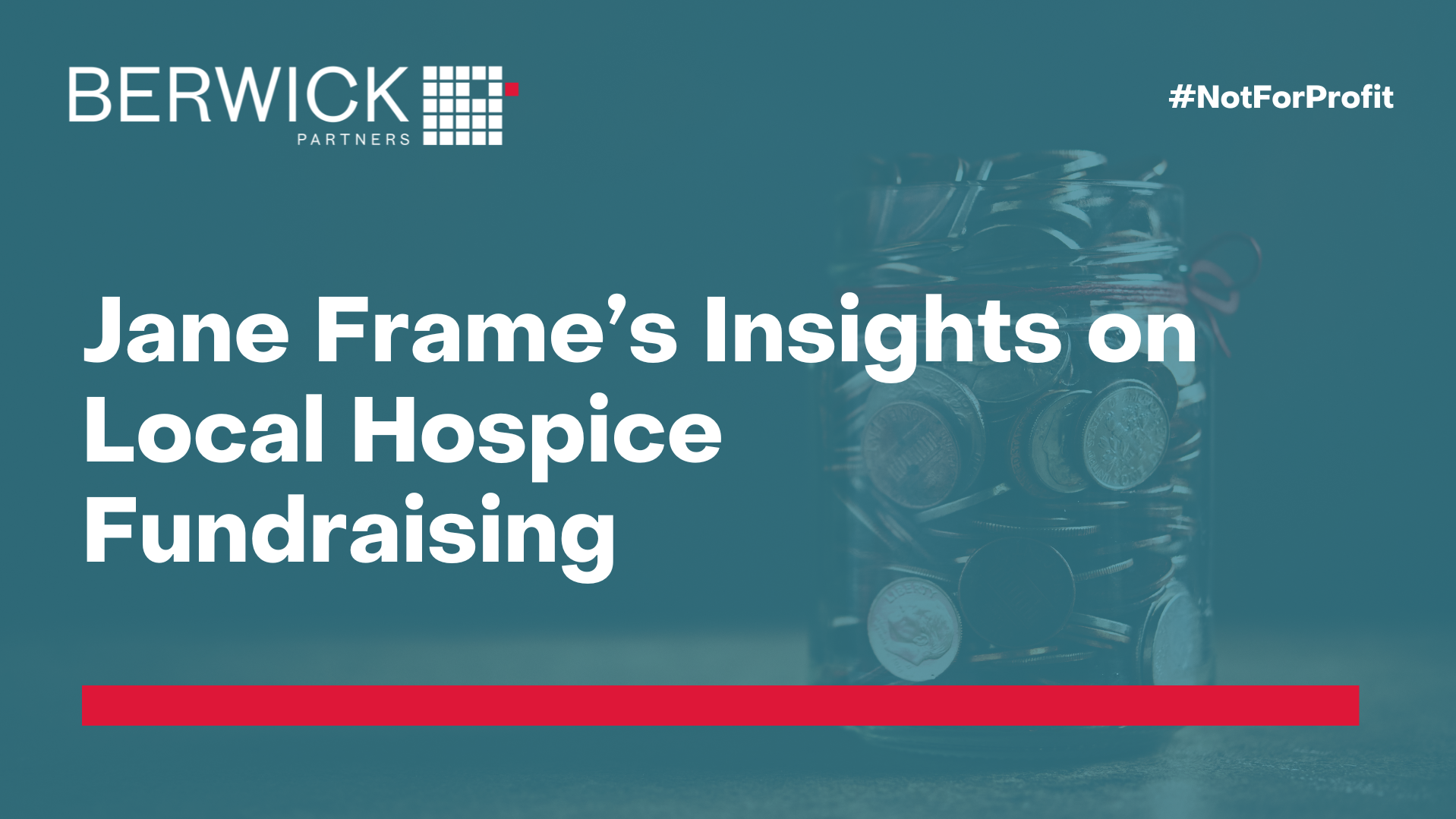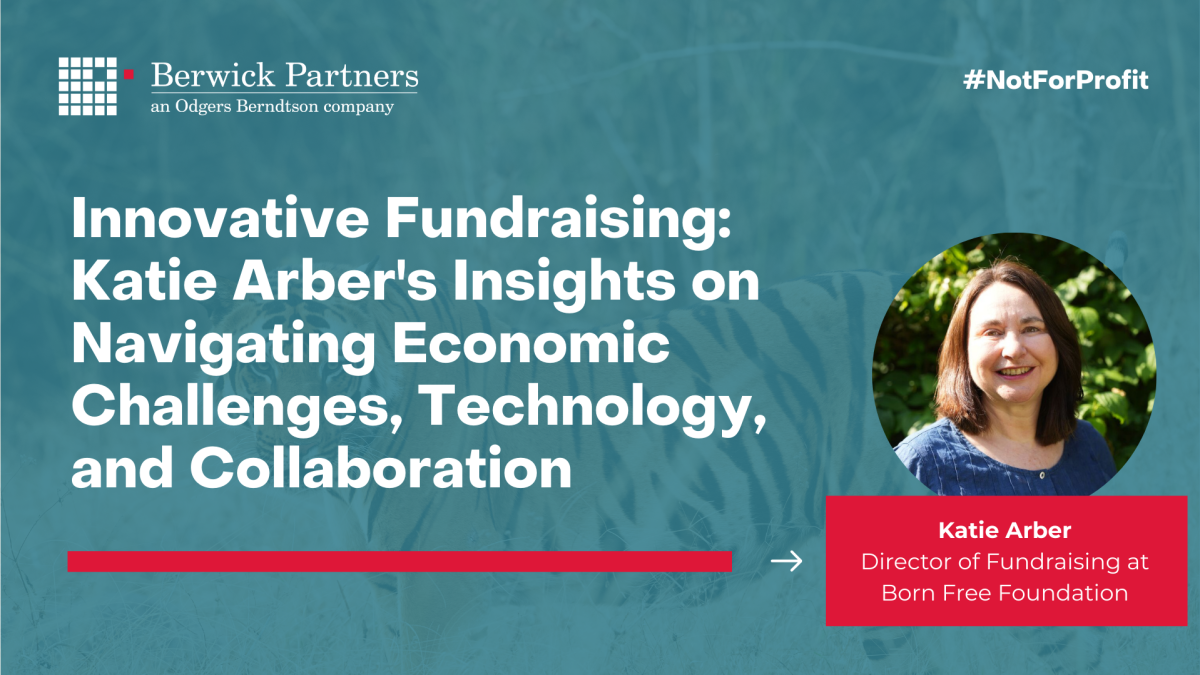Jane Frame’s Insights on Local Hospice Fundraising
Jane Frame, the Former Director of Strategy and Fundraising at Saint Francis Hospice, sat down with Lisa Henry to talk about the unique challenges of fundraising in the palliative care sector. Her insights reveal that there are complexities of attracting skilled fundraising professionals, navigating wider economic factors and adapting fundraising strategies to meet the needs of a local charity.
Recruitment Challenges in End-of-Life Care
Recruitment is a significant issue in the end-of-life sector, which is a rewarding and highly emotive space that may not be for everyone. Jane shares her experience when recruiting for a Head of Fundraising role she stated, “I had 14 possible candidates, none of them wanted to work in end-of-life.” This highlights a broader issue within the non-profit sector: the need to attract and retain talent in specialised areas, where candidate maybe deterred due to the emotional and practical challenges that present themselves. These obstacle require more innovative recruitment strategies, and a focus on creating a supportive work environment for individuals to thrive in.
Jane also points out that there can be difficulties in identifying candidates who possess the right mix of skills and experience. She explains, “We’re looking to attract people with skills and experience who can take us to 15, 20 million. But a lot of those people are already in national charities or looking to get into international charities.” This results in the need for local charities to compete with national charities for top talent with experience.
Jane further elaborates on the distinctions between individuals from national charities and those from smaller organisations. National charities benefit from a robust brand presence and well-established fundraising departments equipped with efficient systems. This provides them with a strong foundational support. For those coming from local charities they have the advantage of knowing the communities they fundraise within. Essentially there are both benefits to hiring from both spaces.
Economic Factors and Fundraising Strategies
The economic landscape significantly impacts fundraising strategies for local charities. Jane discusses the scrutiny of reserves by grant funders and the shift towards corporate social responsibility initiatives. Jane notes that while individual giving has grown, there is increased scrutiny from grant funders regarding the use of reserves. “We’re getting one or two more kickbacks from people who are changing their criteria, scrutinising our reserves a lot more,” she says. This requires clear communication about how reserves are being used and planned for future projects, requiring charities to have strategic plans costed and in place. Charities will aim to maintain healthy levels of reserves to ensure sustainability as set out in their strategies; however, these must be used according to any funding criteria and any new grant funding secured carefully to ensure they can still meet the criteria for grant funding on an on-going basis.
She also explains, “Corporates are wanting to get their staff to do smaller fundraising rather than write just one big cheque.” This shift requires not-for-profits to adapt their strategies and find new ways to engage with corporate partners. Many corporate partnerships now require long-term commitments, so organisations are carrying out regular CSR activities during this time. But there are lots of opportunities as long as charities are creative and pro-active in their relationships with corporate partners.
Despite these challenges, Jane highlights some positive outcomes, during her time at Saint Francis last year there was growth in individual giving and increased engagement in events post-Covid for Saint Francis. The individual giving activity is performed well. “We were well over £100,000 on last year just from our appeal activity,” she shares. This demonstrates the potential for local charities to thrive even in challenging economic conditions.
Organisational Culture and Strategy
Jane emphasises the importance of aligning organisational culture with fundraising strategies. She discusses the need for strategic thinking and adaptability in navigating a well-developed fundraising landscape. “Once you’ve got your income up to a strongly performing level, to grow it further significantly, you need investment and solid experience,” she explains. This requires a focus on innovation and finding new ways to engage donors and supporters, improving on what is already in place which isn’t always easy. This in turn relates back to having the fundraisers with the right set of skills and experience to achieve this.
Jane also highlights the importance of creating a supportive work environment and fostering a sense of community within the organisation. She notes that attracting and retaining skilled professionals requires a focus on well-being and work-life balance. “We need to support staff in the organisation in a way that is reasonable and appropriate to retain good experienced staff and ensure good investment. Without growth opportunities and the right working environment they leave for bigger opportunities elsewhere,” she says.
This can also be supported by the need for individuals to have a flexible working arrangements within their roles. Since the pandemic, flexible working is now the new normal. Many individuals are particularly motivated by the option to work from where necessary. In some instances that has seen the rise is remote opportunities, where people, are even working in different cities across the UK. Prior to the pandemic this was not so common, but the hybrid working with have all grown used to has shown it is possible to work in this way, even for leaderships roles.
The Role of Technology
Jane discusses the role of technology in fundraising, particularly the transition from traditional collection boxes to digital ones. She mentions, “We’ve done a lot with collection boxes over the years… why haven’t we got hundreds of digital payment boxes out?” This shift requires significant investment and poses security challenges, but it also offers the potential for greater returns.
Jane also highlights the importance of using technology to enhance efficiency and streamline processes. She notes that while digital tools can offer new opportunities, they also require careful planning and implementation. “It’s about moving with digital technology and how do we do that well,” she explains.
For further information on Fundraising or our Not for Profit Practice, please contact Lisa Henry.






